TRAVELS WITH YOUR NAVIGO: A PERFECT DAY IN PARC DE SCEAUX – ONE OF THE BEST KEPT SECRETS NEAR PARIS
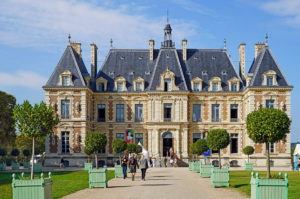
If you’re looking for a very pleasant and interesting day trip from Paris, and you’ve already visited the big headline sites such as Versailles or Fontainebleau, the charming town of Sceaux is certainly one that offers everything you could wish for. Known for its rich architectural heritage, its picture-perfect château, museums, 13th century church, and magnificent parks, it’s hard to believe that Sceaux is less than 10 kms south of Paris.
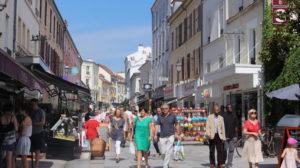
Located in the department of Hautes-de-Seine in the Ile de France, the town of Sceaux (pronounced “So”) is one of the best-known in the region for its gardens and parklands, and is crossed by the southern edge of the green corridor of Paris.
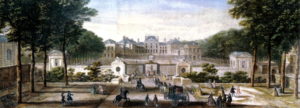
The original château was built in 1670 by Jean-Baptiste Colbert, Louis XIV’s Minister of Finance, and was then purchased by Louis’ illegitimate son, the Duc de Maine, a little over a decade later.
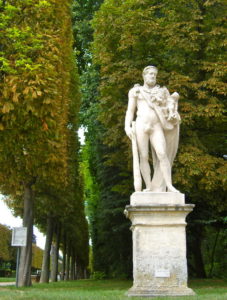
The Duc embellished the grounds, added ornate sculptures, and had a park laid out by the great landscape architect, André le Nôtre, who had designed the Château de Versailles’ gardens. The Duc’s duchesse held court in a glittering salon, and by the turn of the 18th century, the château had grown into a destination for the arts and music, with operas, ballets and numerous celebrations held year-round. Musicians and artists mingled among France’s wealthy nobility, with the writer Voltaire among those enchanted by the extravagant parties he attended there.

However, with the onset of the Revolution, the château’s glittering days of glamour came to an end. Revolutionaries seeking reparations from the monarchy and the Church, confiscated the property and sold everything in the château that wasn’t nailed down. It was transformed into a School of Agriculture during the Revolution and unsurprisingly, lost much of its lustre. Eventually, the building was sold off to a merchant before being demolished a few years later, leaving only the stables and a pavilion standing.
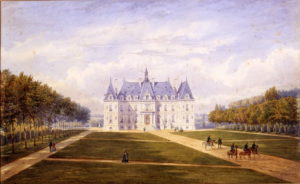
Between 1856 and 1862, the Duc de Trévise picked up the pieces and constructed a new château in a Louis XIII style on the land, but when his daughter inherited the property, she almost sold it off to a real estate developer from St Malo who didn’t think that the dilapidated building was worth saving. Thankfully, the local mayor stepped in and did his best to convince her to preserve it, and luckily for posterity, he was successful.
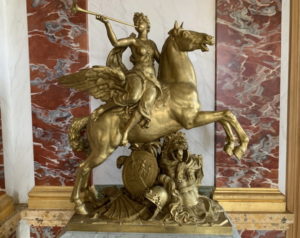
Since 1937, the château has housed the Museum of the Ile de France, which contains the largest collection of paintings by the famed “School of Paris” artists. The château is also dedicated to collections evoking the history of the site and its successive owners since Colbert, to Napoleon III, including engravings, drawings, paintings, sculptures, porcelain, goldsmithery, furniture, manuscripts, decorations, and many other treasures, some of which have come from the Musée Carnavalet in Paris.
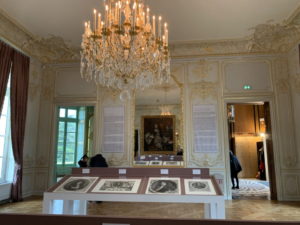
The Museum of the Department Domaine de Sceaux re-opened in September 2020 after major works to bring accessibility standards and security measures to the site, and the opportunity was taken to also re-design the recommended route to enable the visitor to gain a better understanding of the Château and its history. The large rooms are dedicated to each of its owners, from Colbert, Maine, Penthièvre to Trévise; the intermediate rooms deal with the general history of the Domain, the ceramics of Sceaux, the importance of books under the Ancien Regime, and the transition between the original and the current château.
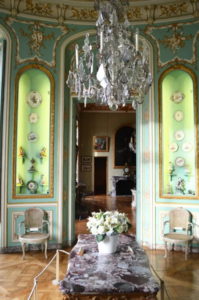
The so-called Room of the Two Princes (the Prince de Dombes and the Conte d’Eu, son of the Duc et Duchesse de Maine) is decorated and set out as though for a small supper in the middle of the 18th century. The Neuily Room is dedicated to the memory of the destruction of the original chateau, and brings together in bedroom pieces of furniture in the Empire style.
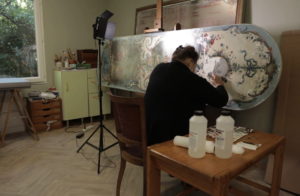
Each room beautifully reveals the universe of its historic occupants and the splendour of past centuries, and really feels like an inhabited residence. The recent restoration works included historically accurate silks for several rooms woven in the famous Manufacture Prelle, that was created in Lyon in 1752; Les Passementeries de l’Ile de France handmade the braids, pompoms, and tiebacks for all the curtains using historically correct silk thread that was used during the original period; all the lighting was restored and re-equipped according to the original versions.
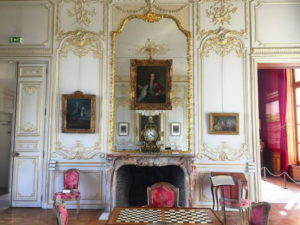
There is also a fascinating collection of old postcards and photographs from around 1923 that provided the restorers with important information about the appearance of the château and its park as it was before the sale of the estate to the Domaine départemental de Sceaux.
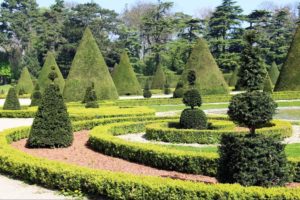
There are also several original watercolour drawings commissioned by the Duc de Trevise in the larger rooms. These watercolours give a fairly precise idea of the splendours of Sceaux at the time of the Duc, as well as the structure of the garden near the residence that reflected the designs by Le Notre. The Trevises abandoned the prevailing fashion for the highly structured ornamental gardens in favour of large expanses of lawn in the English style. Four centuries later, the main axes designed by Le Nôtre still stand just as strongly in the landscape as they ever did. Running north-south is the Allée de Diane that passes in front of the château. A second north-south perspective, very close to the first, starts on the half-circle of the Pinards Terrace, and extends all along the Grand Canal, and the east-west perspective starts at the bottom of the Allée d’Honneur
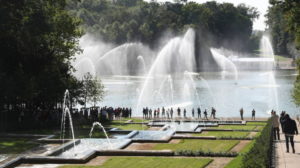
Major sights to visit in the park are the Grand Canal, which is more than 1km long; cascades of 9 fountains and waterfalls that run down to a basin called the Octagone, where a fountain jets more than 10m in the air. There’s an art gallery designed at the end of the 17th century by Jules Hardouin-Mansart, which holds sculptures of the Jardins de l’Epoque by Colbert. The Ecuries de Colbert (stables), built between 1672 and 1674 have been converted into reception rooms, exhibition areas, a restaurant ‘Le Trevise’, and the museum shop. Nearby is a very large drinking trough that was also used to bathe the horses.
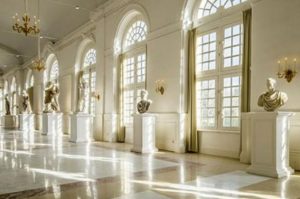
If you’re around at the right time of year, note that L’Orangerie hosts a famous chamber music festival, the Festival de l’Orangerie de Sceaux, every year from August to September featuring internationally-renowned chamber music groups and artists.
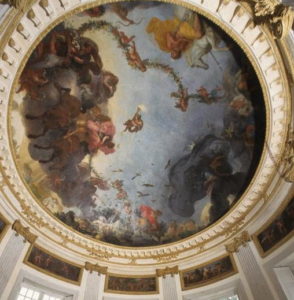
Located in the gardens, the magnificent Pavillon d’Aurore was built in the 17th century by Claude Perrault for Colbert, with a famous dome painted by Le Brun to represent the Aurora (dawn).
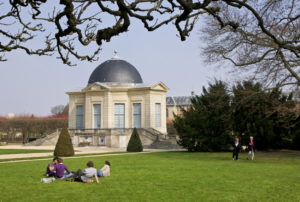
There is another Pavilion in the park, the Hanover Pavilion, that was transported bit by bit from the town into the park in 1932, which has just had a massive restoration job. At one stage in its past, it had been partially coated with cement, an ugly access ramp on one side was installed, and most views of it were obstructed by dense thickets of plants.
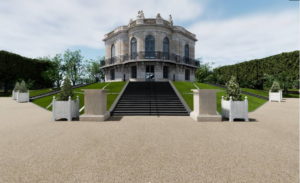
The park covers around 180 hectares and is best discovered slowly on foot, in order to enjoy its atmosphere and diversity of its landscape styles ranging from lawns, clever topiaries of yew, to shady avenues and pretty flower gardens. The park can be thought of as a living theatre, with multiple scenes that change with the seasons and landscape diversity. Check out the moats and pavilions of the main courtyard as well as the waterfalls, water jets in the pools, the alley of cedar trees, and especially the cherry trees, which are an incredible sight when they burst into colour in April. There are maps available to help you get around.
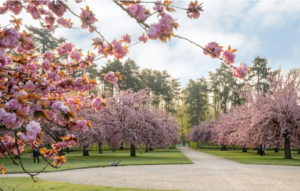
From Jean-Baptiste Colbert who first built the château, to Jean-Baptiste Bergeret de Frouville, the local mayor who saved it, the Château de Sceaux had led a revolutionary history of rebirth—and once again stands as a home for artists, wildlife, ecological biodiversity, plant species and variety of vegetation in an historic landscape.
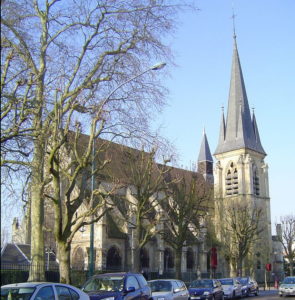
The town of Sceaux is regarded as one of the prettiest towns in the Ile de France, offering many photo opportunities with its delightful little streets, filled with quaint little patisseries, boulangeries and masses of tiny boutiques and cafes. There are many lovely historic buildings, notably the church of St Jean-Baptiste that dates from 1203, a listed Historic Monument.
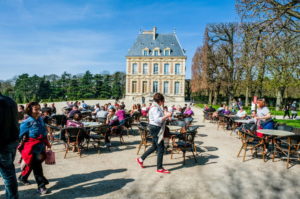
Less than 500m from the château is the Villa Trapenard, a house designed by one of the architects of the Modernist style, Robert Mallet-Stevens in 1932 for Jacques Trapenard, a lawyer and cellist. The house is a listed Historic Monument. Also, not far from the château at no. 2 rue du Lycée is another Historic Monument, Le Chalet Blanc, designed in 1908 by Hector Guimard, mainly remembered these days for his Art Nouveau Paris metro station entrances.
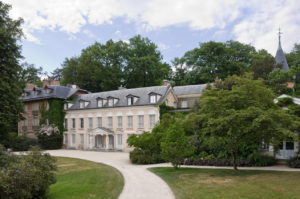
As a further attraction to the area, a little over 2 kms the west of Sceaux is the park of the Vallee aux Loups, with its forest, arboretum, and the house of the great literary figure Chateaubriand in the commune of Le Plessis-Robinson. Chateaubriand was forced to flee Paris as a victim of imperial censorship after he published criticisms of Napoleon in 1807. He transformed this house into a romantic retreat and lived there for 10 years. It’s now a museum and the home of the Chateaubriand Society, with a library and home to the Research Centre for Romanticism. It promotes a lively cultural life with concerts in spring and autumn and temporary exhibitions and literary conferences. The house is located at 87, rue Chateaubriand, Châtenay-Malabry.
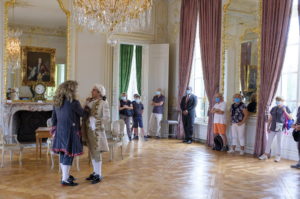
Approaching the domain of the Château de Sceaux from the town, you enter the estate via a set of pretty blue doors outside the Petit Château. This attractive mansion was acquired by Jean-Baptiste Colbert for use as a guesthouse in the early 1680s. From here, a short avenue leads you straight to Sceaux’s crowning glory, the spectacular formal gardens designed by Le Nôtre, and then onto the château itself. The Château de Sceaux is only open in the afternoon, so is best left after you’ve explored the park and all its attractions. The grounds are open from around 7.00am and are free to visit, while the chateau costs around €6 and special shows and events are about €10.
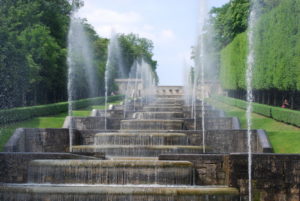
Getting to Sceaux is easy. Take RER Line B from Gare du Nord to Sceaux (this is a better option than Parc de Sceaux). The journey only takes around half an hr. You can use your Navigo Pass, as it’s within Zone 3. From Sceaux station it’s a short walk into the town, and the pedestrianised rue Houdan is the ideal place to buy supplies for a gourmet picnic to enjoy in the chateau’s park. There’s also a lovely outdoor market held on Wednesday and Saturday mornings, and an organic and traditional market also takes place on Sunday mornings.
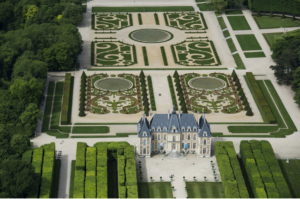


As Always, thank you, Cheryl. What is a Navigo Pass ? Can I buy it here, before I leave ?
I will probably be doing my return flight to Singapore, from Charles de Gaulle airport, after flying up from Biarritz, the day before Do you have the name of a good hotel there, please ?
Hi Lois,
Great to hear from you, and glad you enjoyed the latest story. Graham and I are currently in Ferrara, Italy, having spent a few days beforehand in Venice for a bit of Biennale madness–and it was certainly that!
Here’s the link to my first blog about the Navigo Pass which tells you pretty much all you need to know. However, if you’re only going to be in Paris for a day or so, it’s probably not worth your while. We do a weekly pass ea. visit, and top it up as we go. Have a look at:https://parisplusplus.com/paris/travels-navigo-discovering-paris-beyond/
Ref. an airport hotel: we always stay at the Hilton, which is convenient, pleasant, and has a nice coffee shop/restaurant. Check their rates online, but it’s not a “mega deluxe”, but quite approachable price-wise. You will probably need to catch the Navette train around from the terminal you arrive into. The Navette is on a loop that circles the whole airport complex and there’s about 5 stops. You get out at the one that’s between the 2 stops marked ‘Parking’–it’s in the middle of the 5 stops. There’s an exit marked ‘Hilton Hotel’, and the hotel is pretty much in front of you, perhaps 200m of covered walkway. We stayed there when we arrived into Paris on Wed. night, just for an overnight before flying across to Venice. From the Hilton, you can go back to the railway station and get the RER into the city–it’s on the line that goes to Gare du Nord, so it’s quite convenient. It’s worth waiting a few minutes for a train with only a few stops rather than one that’s an all-stops. I’ve done it many times, and it’s easy. Good luck!
Cheryl,
Again, a delightful read, and some great tips on accom at the airport and trains.
I’m about to head to France from Australia, and will travel thru Paris and on to Brive in the south.
The train tips will help I’m sure.
Thanks.
Paul
Hi Paul,
Glad you’ve found the blogs useful. Even if you don’t have time to see all the things that you’re interested in, it’s great to have things stored up for next time. By the way, are you heading to Brive-la-Gaillarde in the southern Dordogne? If so, lucky you, it’s a beautiful part of the country!
Regards, Cheryl
Hi Cheryl,
Thank you for your most interesting blog. I am particularly interested in Chateau de Sceaux and, when I am travelling again, will have to put on my agenda. Will chat about it on your return. Safe travels, Robbie xx???
Hi Robbie,
Delighted you enjoyed the Sceaux story. We’ll have some interesting chats about it when we’re back, but let me know if there’s anything specific you’d like me to check out for you while we’re in Paris, as Sceaux is on the agenda. You’ll be glad to know that things seem to have pretty much returned to normal, travel-wise. Such a relief! xxx Cheryl